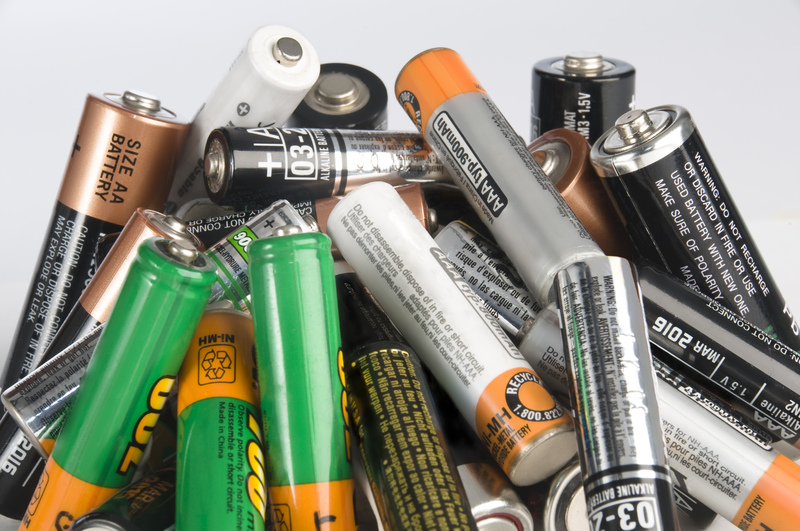Exploring Sustainable Disposal Practices for Cookware
Cookware is a staple in every kitchen, but what happens when our pots, pans, and utensils reach the end of their useful life? With sustainability taking a front seat in consumer choices, exploring sustainable disposal practices for cookware is essential for anyone looking to minimize environmental impact. This comprehensive guide aims to help you navigate eco-friendly disposal options, from recycling and donation to upcycling and smart purchasing.
Why Sustainable Cookware Disposal Matters
Most cookware materials--such as aluminum, cast iron, stainless steel, and nonstick coatings--have significant environmental footprints in both their production and disposal phases. Improper discarding of old pots and pans can lead to landfill buildup, leaching of harmful substances, and waste of valuable resources.
- Reduces landfill waste and environmental pollution
- Recovers materials for future manufacturing
- Decreases demand for virgin resources
- Encourages manufacturers and consumers to be more environmentally conscious

Main Types of Cookware and Their Environmental Impact
Before diving into sustainable disposal options, it helps to know what your cookware is made from and how these materials behave during disposal:
- Stainless Steel: Highly durable and recyclable, doesn't leach toxins
- Aluminum: Lightweight, recyclable, but mining and smelting are energy-intensive
- Cast Iron: Very long-lasting, recyclable, but heavy
- Nonstick (Teflon or Ceramic Coated): Tricky to recycle, may contain chemicals
- Copper: Valuable, but needs specialized recycling
- Glass and Ceramic: Difficult to recycle in most curbside programs; often non-recyclable if broken
Potential Hazards of Improper Disposal
- Chemical leaching from improperly disposed Teflon or ceramic-coated cookware
- Sharp broken glass and ceramic posing physical hazards
- Metal waste overwhelming landfills and contributing to resource depletion
Environmentally Friendly Ways to Dispose of Old Cookware
There's no one-size-fits-all approach. Below are sustainable cookware disposal practices to consider:
1. Recycling Cookware Responsibly
Recycling is a powerful option for disposing of cookware, especially metal pieces. Many communities have metal recycling stations or scrapyards that accept used cookware.
- Stainless steel, cast iron, and aluminum pans are widely accepted.
- Check for plastic or rubber handles--remove them if possible, as they can interfere with recycling processes.
- Nonstick cookware should be taken to specialized recycling centers due to its chemical coating.
- Contact local waste management to determine what types of cookware they accept and their preparation requirements.
Tip: Many hardware stores and kitchenware brands offer recycling take-back programs. Check if the manufacturer has a cookware recycling initiative.
2. Donating Usable Cookware
Before considering disposal, ask yourself if your cookware can still serve someone else. Donation is a sustainable choice that extends the life of your kitchen items and benefits your community.
- Local charities and thrift stores often accept lightly used pots, pans, and utensils.
- Nonprofit organizations, shelters, or food assistance programs may welcome donations.
- Check for specific donation guidelines (some places require cookware to be clean and free from defects or chips).
Pro Tip: Offer cookware through local online community groups, buy-nothing groups, or platforms like Freecycle.
3. Upcycling: Give Your Old Cookware New Life
Upcycling is a creative and environmentally friendly way to dispose of old cookware. Repurposing not only diverts waste from landfill but also adds character to your home.
- Turn old pots into unique plant holders or garden containers
- Transform a colander into a decorative light fixture
- Use pan lids as quirky wall art or message boards
- Convert an old skillet into a vintage clock or serving tray
Upcycling projects are only limited by your imagination--share your creations on social media to inspire community efforts!
4. Manufacturer and Retailer Take-Back Programs
Increasingly, cookware manufacturers and retailers are rolling out take-back initiatives aimed at sustainable disposal. Brands such as Le Creuset, GreenPan, and others periodically launch recycling and trade-in campaigns.
- Some companies offer discounts or credits when you return your old cookware for recycling.
- Check with local cookware stores about in-store collection drives or recycling partnerships.
5. Responsible Disposal for Non-Recyclable Cookware
Sometimes, cookware--especially items with nonstick coatings or ceramic and glass items--cannot be recycled via curbside collection. Here's what you can do:
- Contact your municipality about household hazardous waste events or drop-off locations.
- Ask local waste management if they partner with specialty recyclers.
- If no recycling options exist, wrap broken glass or ceramics safely before discarding and label them for waste handlers.
Eco-Friendly Alternatives: Buying for the Future
Sometimes, the most sustainable cookware disposal practice begins at the point of purchase. Selecting durable, repairable, and recyclable cookware can reduce future waste while supporting a greener planet.
Criteria for Eco-Friendly Cookware
- Made from recyclable materials (stainless steel, cast iron, aluminum)
- Free of toxic coatings
- Repairable (re-seasonable, handle replacement, etc.)
- Long lifespan and warranty support
- Produced with minimal environmental impact
Top Sustainable Cookware Materials
- Cast Iron: Lasts generations, easy to restore
- Stainless Steel: Non-reactive, widely recyclable
- 100% Recyclable Aluminum: Look for uncoated products
- Glass and Porcelain: Choose only if you know how to recycle them locally
Source cookware from companies with environmental certifications and transparent supply chains for added sustainability.
Common Questions About Sustainable Cookware Disposal
Can You Put Old Pots and Pans in the Recycling Bin?
It depends on local recycling guidelines. Most curbside programs don't accept cookware due to size, weight, or material combinations, but many cities do accept them at metal recycling drop-off locations. Always remove non-metal parts and check with your waste authority.
How Do You Safely Dispose of Nonstick Pans?
Most nonstick pans can't be recycled in standard metal programs because of their coatings. Contact local household hazardous waste facilities or search for specialty recycling services. Some manufacturers also offer mail-in or take-back programs.
What Should I Do With Old Cookware That's Still Usable?
Donation is the best sustainable cookware disposal practice for usable items. Give it a thorough cleaning, check for damage, and offer it to:
- Charity shops
- Community centers
- Shelters
- Friends or neighbors
You can also list them for free or for sale on online platforms.
Is Upcycling Cookware Safe?
Upcycling is generally safe, especially for decorative or gardening purposes. However, avoid using cookware with chemical coatings for food or drink-related upcycling projects. If you're unsure, use old cookware strictly for non-food functions.
How Can I Reduce Waste With My Next Cookware Purchase?
Buy better, buy less! Choose long-lasting, high-quality cookware, maintain it well, and support brands focused on sustainability. Aim for recyclable and repairable products, and recycle or upcycle responsibly once they reach the end of their life.
Sustainable Cookware Disposal Checklist
- Evaluate: Could someone else use it? If yes, donate.
- Dismantle: Remove non-metal components for recycling.
- Research: Find local metal recyclers and specialty services for coated pans.
- Reuse: Explore upcycling or repurposing ideas.
- Dispose Responsibly: For non-recyclable items, follow local waste guidance.

Conclusion: Every Cookware Choice Counts
Sustainable disposal practices for cookware go beyond just tossing old pots and pans in the bin. By donating, recycling, upcycling, and choosing eco-friendly alternatives, individuals help conserve resources, reduce landfill waste, and foster a circular economy. Remember, every small action contributes to a cleaner, greener planet. Next time your cookware reaches retirement, make the sustainable choice and help set the standard for a more responsible kitchen.
Resources for Further Exploration
By educating yourself and others about sustainable cookware disposal, you are taking an active role in shaping a better future. So, next time you're ready for a kitchen refresh, dispose responsibly and inspire others to do the same!